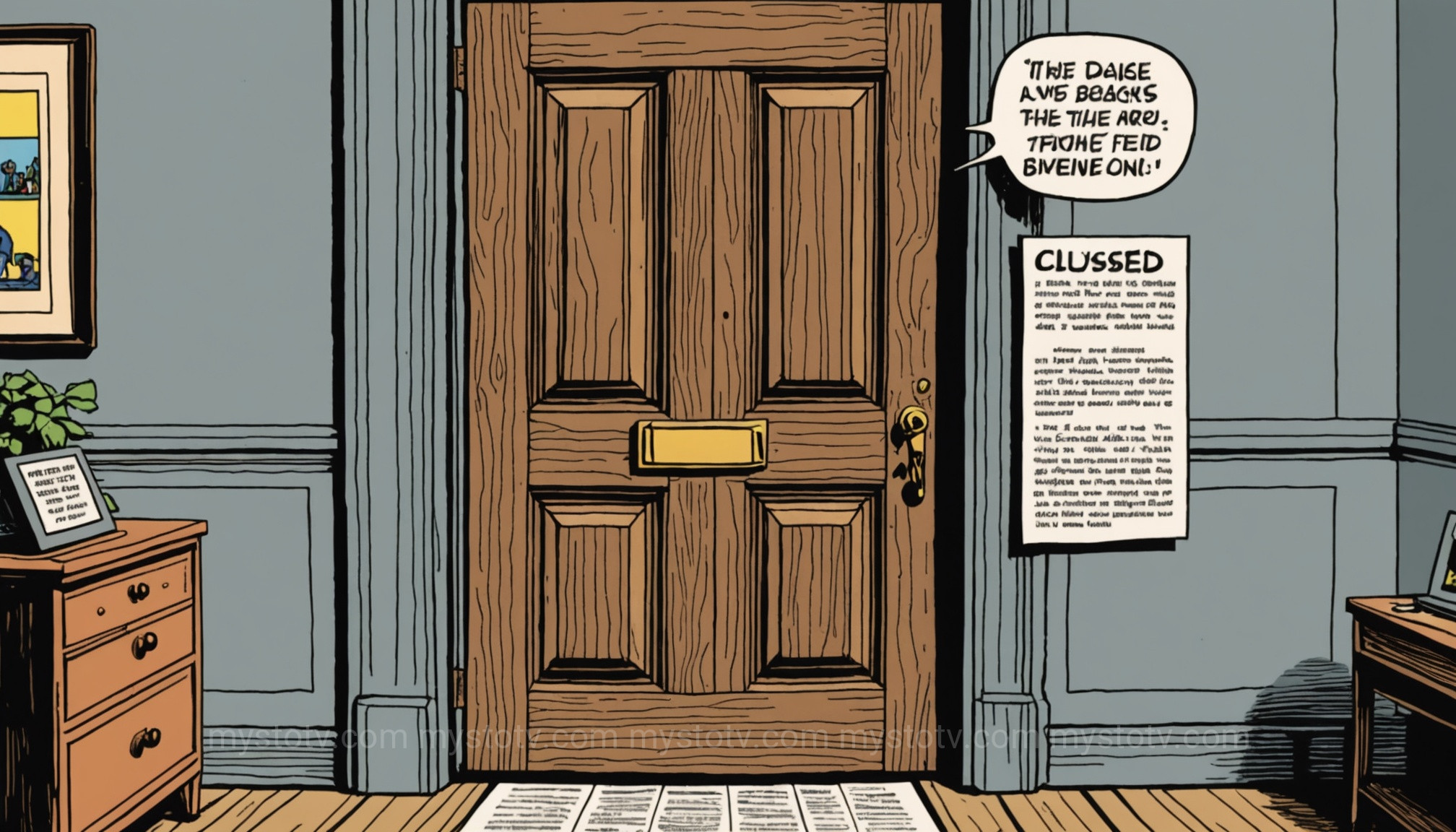The silence after he left was the loudest thing I’d ever heard. It wasn't the peaceful quiet of solitude, but a deafening void where my sense of self used to be. For months, I walked through a fog of confusion, replaying conversations and searching for the moment everything went wrong. I felt broken, discarded, and fundamentally flawed. It wasn't until I stumbled upon a late-night forum, my fingers typing frantic questions into a search bar, that I first saw the phrase that would change everything: "narcissistic abuse." It was a key turning a lock I didn't even know existed. This is my story of narcissistic abuse recovery—not just of surviving, but of a profound and painful transformation from utter heartbreak to a life more authentic than I could have ever imagined.
Contents
- 1 The Shattering: Acknowledging the Need for Narcissistic Abuse Recovery
- 2 The First Steps of Narcissistic Abuse Recovery: Embracing No Contact and Radical Acceptance
- 3 Navigating the Complexities of Narcissistic Abuse Recovery: Rebuilding My Reality
- 4 Therapy and Professional Support in My Narcissistic Abuse Recovery Journey
- 5 Rediscovering Self-Worth: The Cornerstone of My Narcissistic Abuse Recovery
- 6 Transforming Pain into Power: Life After Narcissistic Abuse Recovery
- 7 Frequently Asked Questions (FAQ)
- 8 References
- 9 Conclusion: The Dawn After the Darkest Night
The Shattering: Acknowledging the Need for Narcissistic Abuse Recovery

The end didn't come with a dramatic fight, but with a chillingly calm discard. It was a sudden, surgical removal from his life that left me gasping for air. The person who had once showered me with intense affection—a phenomenon I now know as love bombing—was suddenly gone, leaving behind a ghost and a thousand questions. My reality felt like a house of cards that had been violently swiped away, and I was left sitting in the rubble.
Analysis: The initial phase of recovery is often characterized by profound shock and cognitive dissonance. The abuser has meticulously crafted a reality for the victim, and its sudden collapse is not just a breakup; it's the disintegration of one's perceived world. The emotional whiplash from idealization to devaluation and discard is a hallmark of this type of abuse, intentionally designed to destabilize the victim and leave them questioning their own sanity. This is why the heartbreak feels so uniquely destructive.
The Final Discard and the Crushing Silence: The Start of My Recovery
In the days and weeks that followed, the silence was my tormentor. Every unanswered text, every blocked social media profile, was a fresh wound. I was conditioned to seek his validation, and its abrupt withdrawal sent me into a panic. I blamed myself relentlessly. What did I do? How could I fix it? This self-blame is a powerful chain, forged by months or years of subtle manipulation and gaslighting. Breaking it is one of the first, most arduous tasks in any journey of narcissistic abuse recovery.
Discovering the Language of Abuse: A Painful Step in Narcissistic Abuse Recovery
My breakthrough came from desperation. I started researching "emotional manipulation," "feeling crazy in a relationship," and "sudden breakups." This led me to articles and survivor stories describing narcissistic personality disorder (NPD) and its impact. Terms like gaslighting, trauma bonding, love bombing, and devaluation gave a name to my invisible injuries. It was a horrifying validation. I wasn't crazy; I was abused. Recognizing this truth was both a relief and a new kind of pain. It meant accepting that the love I thought was real was, in large part, an illusion. This acknowledgment was the true, painful beginning of my narcissistic abuse recovery.
The First Steps of Narcissistic Abuse Recovery: Embracing No Contact and Radical Acceptance

Learning the terminology was one thing; acting on it was another. The most consistent advice I found was unanimous and terrifying: No Contact. It felt impossible, like being told the only cure for starvation is to stop eating. My entire system was wired to seek him out, to get that "fix" of intermittent reinforcement that had kept me hooked. This stage of my narcissistic abuse recovery required a level of strength I didn't think I possessed.
Analysis: The No Contact rule is a critical boundary-setting exercise that creates the necessary space for healing. The relationship with a narcissist is often compared to an addiction due to the "trauma bond," an intense connection forged through a cycle of abuse and positive reinforcement. Going No Contact induces a withdrawal period, complete with cravings, anxiety, and obsessive thoughts. It is a neurological and psychological battle that must be won for any real progress to occur.
Implementing No Contact: My Lifeline in Early Narcissistic Abuse Recovery
I blocked his number, his email, and every social media profile. I asked our few mutual friends not to give me updates. Each action felt like a mini-death, but also a mini-victory. The first few weeks were excruciating. I physically ached to hear from him. I wrote countless emails I never sent. I fought the urge to drive past his house a hundred times. This intense period is a normal and harrowing part of breaking the trauma bond, a necessary detoxification for anyone serious about narcissistic abuse recovery.
The Agony of the Trauma Bond: Grieving a Phantom in My Recovery
I wasn't just grieving the man I knew; I was grieving the man I thought he was. I was grieving the future he had promised me and the person I was when I was with him (or so I thought). This is the complexity of trauma bonding. You are mourning a person who never truly existed. It requires you to hold two opposing ideas at once: the charming, loving person you fell for, and the cruel manipulator who hurt you. Accepting this duality is a key intellectual and emotional hurdle in narcissistic abuse recovery.
Radical Acceptance: A Turning Point in My Narcissistic Abuse Recovery
Radical acceptance, a concept from Dialectical Behavior Therapy (DBT), became my mantra. It doesn't mean condoning the abuse. It means accepting, without judgment, the reality of what happened and who he is. I had to accept that he was not going to change, apologize, or give me the closure I craved. I had to accept that the relationship was built on a foundation of control, not love. This acceptance was liberating. It shifted my focus from him to me, from "why did he do this?" to "how do I heal from this?". This shift is a pivotal moment in narcissistic abuse recovery.

Once the initial storm of No Contact passed, a strange quiet settled in. In this quiet, I had to confront the real damage: the erosion of my own mind. Years of gaslighting had made me doubt my memory, my perceptions, and my judgment. My "inner compass" was broken. A significant portion of my narcissistic abuse recovery was dedicated to the painstaking process of rebuilding my trust in myself.
Analysis: Gaslighting is one of the most insidious forms of psychological abuse. It systematically dismantles a person's sense of reality, making them easier to control. Recovery from this involves a conscious and deliberate effort to reclaim one's own narrative. It is an act of mental and emotional sovereignty, moving from a state of externally imposed confusion to one of internal clarity.
Combating Cognitive Dissonance: A Core Challenge of Narcissistic Abuse Recovery
My mind felt like a war zone. One moment, I'd remember his cruelty and feel righteous anger. The next, a memory of a good time would surface, and I'd be flooded with doubt and longing. This is cognitive dissonance, the mental stress of holding conflicting beliefs. To combat it, I made a list. On one side, I wrote down every instance of manipulation, every lie, every cruel remark. On the other, I wrote down the "good times." The first list was shockingly long; the second, surprisingly short and often tied to grand gestures that now felt hollow. Referring to this list whenever I felt weak was a concrete tool that grounded me in reality and strengthened my resolve for narcissistic abuse recovery.
Journaling to Reclaim My Truth: An Essential Tool for Healing
I bought a simple notebook and started writing. I didn't edit or judge; I just poured out the confusion, the anger, the sadness. I wrote down memories as I remembered them, solidifying my version of events before my mind could be tricked into doubting them again. Journaling became my external hard drive for my own reality. It was a space where my feelings were valid, my perceptions were true, and my voice mattered. It was, and is, an indispensable practice for anyone undergoing narcissistic abuse recovery.
Learning to Trust Myself Again During Narcissistic Abuse Recovery
This was a slow, gradual process built on small decisions. It started with choosing what to have for dinner without worrying about someone else's preference. It grew into making bigger plans—a solo trip, a new class—without seeking approval. Every time I made a choice based on my own intuition and it turned out okay, I deposited a small coin into my "self-trust" bank. Over time, that account grew, and the voice of self-doubt, which often sounded eerily like him, began to fade. This is the quiet, essential work of a lasting narcissistic abuse recovery.
Therapy and Professional Support in My Narcissistic Abuse Recovery Journey
While self-help was crucial, I knew I couldn't navigate this labyrinth alone. The trauma felt too deep, the mental knots too tangled. Seeking professional help was one of the best decisions I made for my narcissistic abuse recovery. It provided a safe container for my pain and a roadmap for my healing.
Analysis: A therapist specializing in trauma or narcissistic abuse can accelerate healing exponentially. They provide external validation, which is critical when your own judgment has been compromised. They can also identify related conditions like Complex PTSD (C-PTSD), which often results from prolonged relational trauma, and offer evidence-based treatments that go beyond simply talking about the problem.
Finding a Trauma-Informed Therapist: A Non-Negotiable for My Recovery
I didn't just look for any therapist; I specifically sought out someone with experience in "trauma," "C-PTSD," and "narcissistic abuse." This is vital. A therapist who doesn't understand the dynamics of this specific type of abuse can inadvertently cause more harm, perhaps by suggesting couples counseling or focusing on the survivor's "part" in the dysfunctional dynamic. My therapist understood the playbook of manipulation from our first session, which was an immense relief. A knowledgeable guide is paramount to a successful narcissistic abuse recovery.
How Therapy Validated My Experience and Fueled My Narcissistic Abuse Recovery
Hearing a professional say, "Your reactions were normal responses to an abnormal situation," was life-altering. Therapy gave me a space to be angry, to cry, and to grieve without judgment. My therapist provided me with tools to manage anxiety, handle intrusive thoughts, and understand the mechanics of the trauma bond. We worked on somatic exercises to release trauma stored in my body. This professional guidance turned my haphazard attempts at healing into a structured, effective plan for narcissistic abuse recovery.
Rediscovering Self-Worth: The Cornerstone of My Narcissistic Abuse Recovery

The deepest wound left by the abuse wasn't the heartbreak; it was the utter demolition of my self-worth. I had been subtly trained to believe I was not good enough, that my needs were irrelevant, and that my value was conditional upon his approval. Rebuilding that sense of intrinsic value was the longest and most important phase of my narcissistic abuse recovery. the initial shattering had to be followed by a careful reconstruction.
Analysis: Narcissistic abuse functions by eroding a victim's sense of self. The recovery process, therefore, must be centered on rediscovering and rebuilding that self. This isn't about grand gestures of "self-love," but about the quiet, consistent practice of self-compassion, self-respect, and honoring one's own needs. It is the fundamental shift from being object to subject in one's own life.
From Self-Blame to Self-Compassion in My Narcissistic Abuse Recovery
I started treating myself like I would treat a dear friend going through a hard time. When the inner critic flared up, I would consciously stop and ask, "Would I say this to someone I love?" The answer was always no. I practiced self-compassion, allowing myself to have bad days without seeing it as a failure of my recovery. This gentle approach was a radical departure from the harsh perfectionism the abuse had instilled in me, and it was a critical component of my narcissistic abuse recovery.
Reconnecting with My Authentic Self: Hobbies, Friends, and Joy
Slowly, I began to reclaim the parts of myself I had set aside to make room for the relationship. I picked up my old guitar. I called friends I hadn't spoken to in years, who welcomed me back with open arms. I went for long hikes, not to escape my thoughts, but to be with them in a peaceful setting. Each of these small acts was a way of saying, "I am still here. My interests matter. My joy matters." It was like watering a plant that I had long forgotten, and watching it slowly come back to life. This is what true narcissistic abuse recovery feels like.
Setting Boundaries: The Ultimate Act of Self-Respect in Recovery
My final exam in self-worth was learning to set and enforce boundaries—not just with potential partners, but with everyone. It started small: saying "no" to a social invitation I didn't have the energy for, without a long, apologetic explanation. It grew into stating my needs clearly in friendships and at work. Boundaries are not walls to keep people out; they are gates that I control. They are the tangible expression of self-respect. Learning this was perhaps the most empowering outcome of my entire narcissistic abuse recovery journey.
Transforming Pain into Power: Life After Narcissistic Abuse Recovery

There's a common question among survivors: "Will I ever be the same?" The answer I've found is: "No, thank goodness." The goal of narcissistic abuse recovery isn't to return to the person you were before—that person was vulnerable to this kind of manipulation. The goal is to integrate the experience and emerge as a more resilient, discerning, and authentic version of yourself.
Analysis: The concept of post-traumatic growth is key here. While not minimizing the horror of the trauma, it is possible for individuals to experience positive psychological changes as a result of their struggle. This can include a greater appreciation for life, improved relationships, a heightened sense of personal strength, and a deeper spiritual life. The pain becomes a catalyst for profound transformation.
Post-Traumatic Growth: The Unexpected Gift of My Healing Journey
The scars from the abuse are still there, but they no longer hurt to the touch. Instead, they serve as reminders of my own strength. My intuition—my "BS detector"—is now finely tuned. I can spot red flags from a mile away. I have a deeper capacity for empathy, especially for others who are hurting. I value peace over passion and consistency over intensity. These are the gifts forged in the fire of my narcissistic abuse recovery.
Living an Authentic Life: The True Meaning of Narcissistic Abuse Recovery
Today, my life is smaller and quieter in some ways, but infinitely larger and more vibrant in others. It is built on a foundation of my own values, not someone else's expectations. The heartbreak was devastating, but the transformation it triggered was life-saving. The journey of narcissistic abuse recovery didn't just give me my life back; it gave me a life that is truly my own, for the very first time. And for that, I am profoundly grateful.
Frequently Asked Questions (FAQ)
Based on my experience and the questions I see most often in support communities, here are a few practical insights.
How long does narcissistic abuse recovery really take?
There is no finish line or universal timeline for narcissistic abuse recovery. It's not a linear process; there will be good days and bad days, steps forward and steps back. For me, the most intense pain subsided after about six months of strict No Contact, but the deeper work of rebuilding self-worth has been an ongoing, multi-year process. The focus should be on progress, not perfection. Celebrate small victories and be compassionate with yourself during setbacks.
What if I can't go completely No Contact because of children or work?
If No Contact is impossible, the goal is "Low Contact" and emotional detachment. This involves strategies like the "Gray Rock" method, where you become as boring and unresponsive as a gray rock. Communicate only when absolutely necessary (e.g., about logistics for children), keep it brief, factual, and devoid of emotion. All communication should be in writing (like text or email) to have a record. This minimizes the abuser's ability to get the emotional reaction ("narcissistic supply") they crave and protects your energy for your narcissistic abuse recovery.
Will I ever be the same person again after this experience?
No, you won't be the same, and that is ultimately a positive outcome of narcissistic abuse recovery. You will be wiser, more resilient, and have a much stronger sense of self. The naive trust you once had may be gone, but it will be replaced by a healthier, more discerning wisdom. You will learn to honor your intuition and enforce boundaries to protect your peace. The "you" that emerges from this process is a truer, stronger version of the person you were always meant to be.
References
- Durvasula, Ramani. "Don't You Know Who I Am?": How to Stay Sane in an Era of Narcissism, Entitlement, and Incivility. Post Hill Press, 2019.
- National Domestic Violence Hotline. "What Is Gaslighting?" TheHotline.org. https://www.thehotline.org/resources/what-is-gaslighting/
- Mayo Clinic Staff. "Narcissistic personality disorder." Mayo Clinic. https://www.mayoclinic.org/diseases-conditions/narcissistic-personality-disorder/symptoms-causes/syc-20366662
- Walker, Pete. Complex PTSD: From Surviving to Thriving: A Guide and Map for Recovering from Childhood Trauma. CreateSpace Independent Publishing Platform, 2013. (Note: While focused on childhood trauma, its insights on C-PTSD are highly relevant to survivors of long-term narcissistic abuse).
Conclusion: The Dawn After the Darkest Night
My journey through the desolate landscape of heartbreak and manipulation was the most challenging period of my life. Yet, it led me to a destination I never would have found otherwise: my authentic self. The path of narcissistic abuse recovery is not an easy one. It demands courage, radical honesty, and a willingness to sit with profound pain. But on the other side of that pain lies a freedom that is unshakable. It's the freedom to trust your own mind, to honor your own needs, and to build a life filled with genuine joy and peace. If you are standing in the rubble of a relationship like this, please know that healing is not just a distant possibility—it is your birthright. The transformation is real, and a beautiful, authentic life is waiting for you.